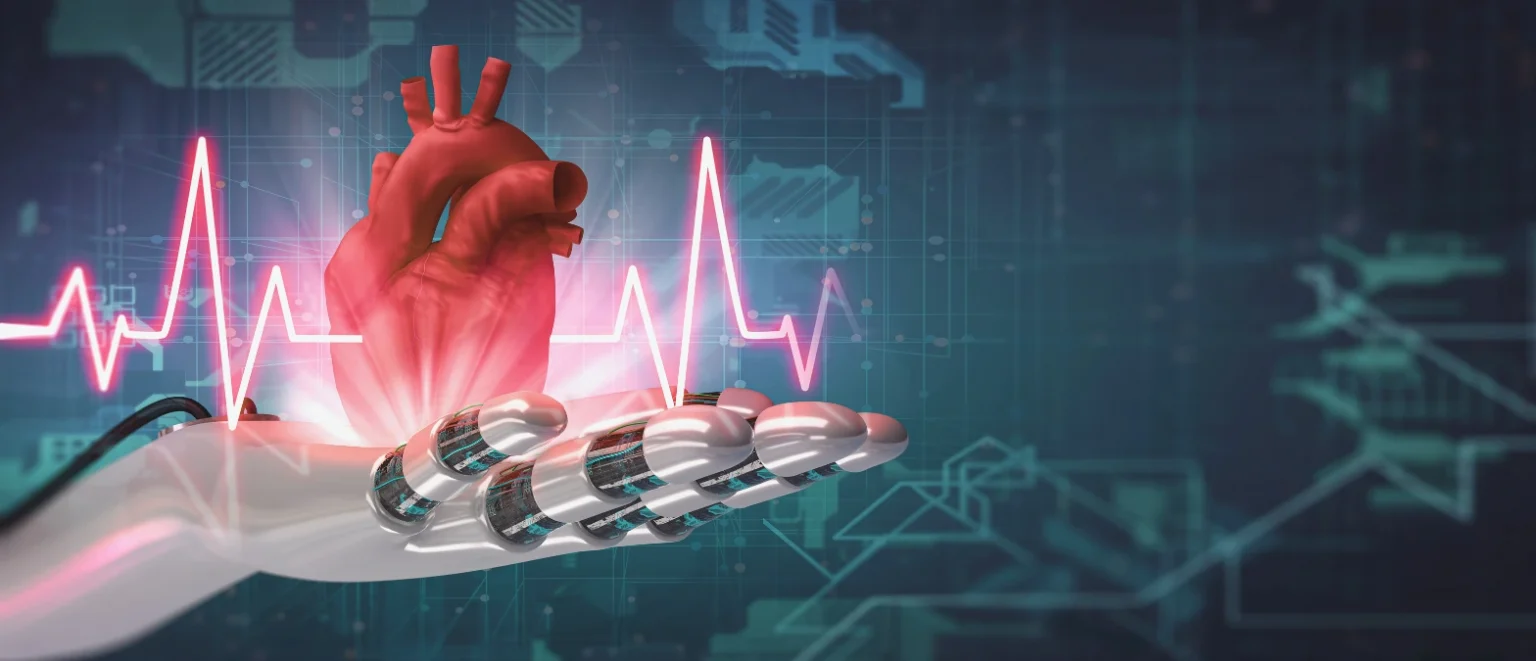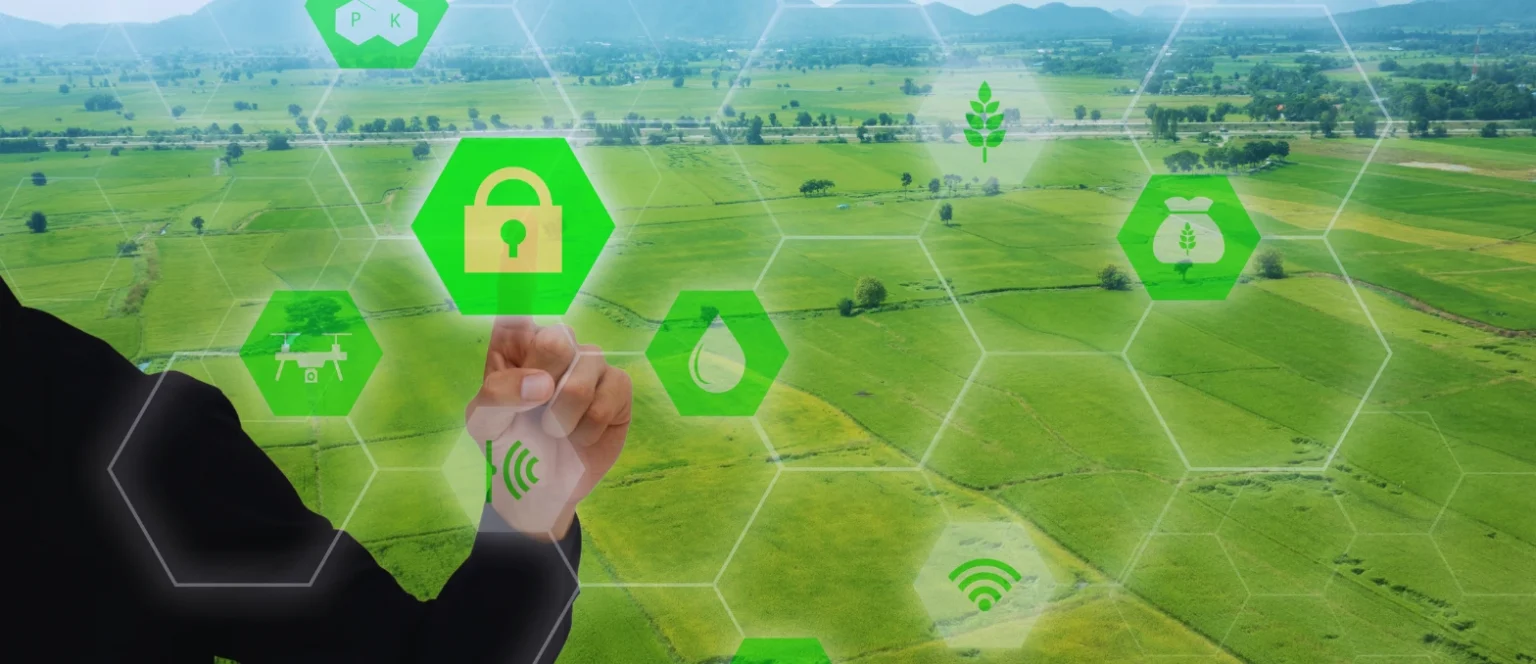Generative AI stands as a significant leap forward in modern technology. Put simply; it heralds a new era in the vast landscape of artificial intelligence. In the words of Elon Musk ” Generative AI is the most powerful tool for creativity that has ever been created. It has the potential to unleash a new era of human innovation“. As per Statista, the generative AI market size is expected to reach at $66.2bn in 2024. While standard AI systems rely on established patterns and guidelines, this version can create its unique content. From crafting a song to generating a distinct image or drafting a concise email, this AI taps into extensive data to produce something entirely original. So, now AI doesn’t just process data; it creates afresh.
Table of Contents
What is Generative AI?
Generative AI uses available data to make something fresh and distinct. This could be a song, a visual masterpiece, or even a written article. These crafts are originals using the information it gathers.
But where does the need to hire Salesforce developers come into play? Salesforce CRM, a top-notch customer relationship management platform, is keenly exploring Generative Artificial intelligence’s wonders. Hence, by bringing on board Salesforce developers skilled in this, companies can tap into this tech magic to deeply know and aptly serve their clients.
Difference Between Generative AI and Traditional AI Models
To appreciate Generative Artificial Intelligence’s essence, it’s crucial to spot the differences between it and the more familiar traditional AI. Conventional AI models, which many might recognize, are set to obey given tasks. They take in details, examine them, and then deliver outcomes using set formulas. For example, if you utilize a calculator for arithmetic or GPS for directions, you’re engaging with this old-style AI. It offers you an outcome, all based on its coding. Generative AI, in contrast, is a creator. Also, it doesn’t just digest data. It shapes something novel out of it.
Bringing it back to Salesforce, this distinction implies a transformative advantage for companies. When they approach Salesforce developers proficient in Generative Artificial Intelligence, they acquire more than a tool that decodes customer details. They gain an instrument capable of unveiling uncharted insights, plans, and remedies. This isn’t just about understanding data; it’s about forging advanced and bespoke approaches for customer ties.
How Does Generative AI Function?
Large-Language Models (LLMs)
We hear the term Generative AI a lot. Tied closely to it is another term: Large-Language Models or LLMs. What are they? Think about a big collection of books and articles covering many subjects. If someone went through all those, they’d have a lot of knowledge, wouldn’t they? LLMs work that way. They’re digital tools that have looked at many texts from the web. This helps them get a wide grasp of language and information.
For businesses looking at Salesforce custom development, adding LLMs can be a great move. It means using an AI tool that not just does tasks but understands things and can make content that seems nearly made by humans.
The Importance of Pre-trained Models for Novel Content Generation
One key feature of Generative Artificial Intelligence is making new content. How can it do that so well? The answer is pre-trained models. Think of these as AI systems that have absorbed vast amounts of information before they’re given any specific tasks. It’s like a student who has studied a lot and is now set to tackle hard questions on the topic.
Having this kind of model sets the stage. At this stage, the AI can be adjusted to make fresh content for specific purposes. If they use custom development in Salesforce, they can get AI tools that make content like ads, answers to customers, or sales ideas. These creations aren’t generic; they align seamlessly with a company’s unique branding and objectives.
In the custom development realm, the sky’s the limit. Companies can use Generative AI to give customers a personal touch, come up with new marketing plans, and communicate better. And all this is due to LLMs and pre-trained models.
Core Mechanisms of Generative AI
Generative Adversarial Networks (GANs)
Generative Adversarial Networks, or GANs, are a big deal in the Generative Artificial Intelligence field. People talk about them a lot. Why? GANs work with two parts: a generator and a discriminator. Let’s see how they work together.
The generator creates, and the discriminator checks. The generator keeps improving with the help of the discriminator. After a while, what the generator makes looks very real. Salesforce experts find this very useful for their work.
Transformers and Their Role in Content Generation
Transformers are important in Generative AI too. Unlike GANs, transformers learn from patterns, especially in words. They look at data in groups and see how parts connect. This is great for jobs like translating languages and writing.
ChatGPT is a kind of transformer. It has been learned from a lot of information. So, it’s good at writing like humans do. Experts of Salesforce find this very interesting. They think it can help talk to customers in a natural way.
Other Influential Techniques: Variational Autoencoders (VAEs) and Neural Radiance Fields (NeRFs)
Generative Artificial Intelligence has other methods too. Variational Autoencoders (VAEs) are a bit like GANs but work differently. They have an encoder that makes data simple and a decoder that brings it back to its original form. This is good for making and saving data.
Neural Radiance Fields (NeRFs) work with pictures. They make detailed 2D and 3D images by understanding light and space. Also, experts of Salesforce see a lot of use in NeRFs for better visuals.
As AI grows, these Generative AI methods are leading the way. They have a lot to offer, especially when experts in salesforce use them. They will change how we handle data, talk to customers, and make content in the future.
Salesforce’s Exploration into Generative AI
Historical Perspective: Salesforce’s Initial Forays
Everyone knows Salesforce for their top-notch customer help tools. They’ve always liked trying new tech stuff. And Generative Artificial Intelligence caught their eye. As new AI tools came up, Salesforce saw how big Generative Artificial Intelligence could be.
From the start, they wanted to see how Generative Artificial Intelligence could make their tools better. They didn’t just want a new feature. They wanted to shake things up and make their platform smarter and easier to use. Also, they dug deep into Generative AI. Their goal? Make customer help better and offer more to businesses. Their top-notch services aimed to offer more. With Generative Artificial Intelligence, they felt they could do just that.
Specific Projects: CodeGen and LAVIS
Salesforce took on many Generative Artificial Intelligence projects. But CodeGen and LAVIS really shine.
- CodeGen – Software is everywhere. Making software should be easy. That’s where CodeGen comes in. With CodeGen, Salesforce hoped to make software making simple. Users say what they want in plain English. Then, due to Generative Artificial Intelligence, CodeGen turns it into real software code. Also, this wasn’t just about making things faster. It was about letting everyone, even those who aren’t tech experts, make software. All this was possible by joining Salesforce development services with Generative Artificial Intelligence.
- LAVIS (Language-Vision) – Words and pictures go hand in hand online. LAVIS, or Language-Vision, is Salesforce’s way to connect them. With LAVIS, you don’t need to be a research expert to use AI tools that mix words with pictures. Salesforce wanted more people to use it. So, whether it’s checking a picture using words or writing about a picture, LAVIS showed how cool Generative AI can be.
Witness the power of generative AI to embrace limitless innovation
Revolutionizing Customer Service with Generative AI
Personalizing Agent Responses Using AI\
Today, customers want more than quick answers. They want experiences that feel just for them. Generative AI is making this happen. Think of customer service people with AI tools. These tools help them give answers that fit each question. It might seem like something from the future, but with Generative Artificial Intelligence, it’s happening now.
Salesforce development companies are using this top AI tech. When a customer has a question, the AI looks at the details and feelings of the question. It uses its knowledge to give a reply that fits the customer’s past and needs.
This method doesn’t just save time. Also, it builds trust. Customers feel special when their questions get unique answers.
Enhancing Customer Relationships Through AI-aided Interactions
The bond between a company and its customers is important. It’s based on trust and good moments. Generative Artificial Intelligence can make this bond even stronger.
Each time a customer communicates with a company, there’s a record. A Salesforce development company equipped with Generative Artificial Intelligence delves into these traces. This allows them to grasp the preferences and expectations of each client. Yet, Generative Artificial Intelligence doesn’t just observe. It actively harnesses this understanding to provide tailored content and guidance.
For instance, if a client frequently inquires about a specific item, the AI can notify them of updates or promotions related to that item. Conversely, if a client encounters issues with a particular service, the AI can propose solutions even before they express their concern.
In essence, Generative AI transforms the way businesses cater to their clients. It anticipates client needs and proactively extends support. Every interaction aims to elevate the client’s overall experience.
Generative AI in Business Strategy and Planning
Salesforce’s ProGen Project and Its Innovative Approach
Salesforce has recently used Generative Artificial Intelligence more and more. It’s changing how businesses plan and make strategies. One of their big steps in this area is the ProGen project.
ProGen is more than just a tech project. It shows what Salesforce sees for the future. This project uses Generative Artificial Intelligence in a new way. It’s not just about making language models. Also, it goes beyond that. So, it works on something called amino acids.
So, what do amino acids have to do with business plans? It’s all about new ideas. When Salesforce integration services work with amino acids, they make new discoveries. They don’t just look at old data. With Generative AI services, ProGen can make new amino acid patterns. These new patterns could change many things, especially in health.
Potential for AI to Generate Novel Proteins for Medical Applications
Creating new amino acid patterns has a lot of uses. But the biggest use might be in medicine. Proteins are made from amino acids. They do many things in our bodies. They help with reactions and fight germs. Their role is huge.
Now, with Generative Artificial Intelligence, we can make new proteins. This could change how we treat sickness. We might make proteins for certain illnesses. Also, we could make special vaccines or treatments for rare diseases. All of these could be more focused and better.
With the ProGen project, integration services in Salesforce are doing more than just adding to their platform. They are helping make a future where treatments are better. They match the person and are easy to get. Hence, by using Generative Artificial Intelligence, they are ready for big changes in health. Doctors and scientists could use new proteins. These proteins might help with diseases we thought we couldn’t beat.
Risks and Ethical Considerations
Ensuring Accuracy and Reliability
Generative Artificial Intelligence stands out in tech today, and for it to shine, it needs accuracy and trustworthiness. Companies that work with Generative Artificial Intelligence know this. They’re always striving to make sure the things AI creates — be it content, designs, or solutions — are correct and dependable.
What’s Generative Artificial Intelligence? Simply, it’s tech that creates new content or solutions from the data it’s given. It’s special because it makes new things. But if what it makes isn’t right or trustworthy, it can be bad. This is especially true in areas like health or money, where getting things right is a must.
For any business, this is super important. If an AI suggests something for a chat with a customer or an email trying to make a sale, it has to be spot-on. It can’t just make things up. Getting things wrong could give the wrong idea about Generative AI companies and hurt their name. So, making sure AI is working right isn’t just about tech. It’s also about doing what’s right.
Ethical Implications of “Confident Failure”
There’s something interesting about top-notch AI, like Generative AI. They’re super sure about what they say or suggest. But sometimes, even if they’re wrong, they’ll still seem very sure. Experts call this “confident failure.” It’s when the AI is wrong but still says it’s right.
Now, this can be a big problem. If people or companies just believe whatever the AI says because it sounds so sure. If the AI’s wrong, that could lead to big mistakes. So, Top artificial intelligence companies need to keep an eye on this. Also, they need to have ways to double-check or highlight what AI suggests, especially when a lot’s at stake.
AI-Driven Creativity at Your Fingertips – Unveil the Power of Generative Solutions.
Addressing Concerns About Increased Carbon Footprints
Tech can affect our planet. Generative Artificial Intelligence is part of this. Because it’s so advanced and works with loads of data, it uses a lot of energy. More energy use means more harm to our planet.
With our planet facing big climate problems, an artificial intelligence development company have a big job to do. They need to think about our planet. Maybe they could use clean energy, make their AI use less energy, or help with green projects. Also, companies that use AI need to lead the way in taking care of our world.
Future Prospects: Generative AI in CRM
Salesforce’s Einstein GPT
Generative Artificial Intelligence isn’t a passing phase. It’s quickly becoming essential in areas like Customer Relationship Management (CRM). A leader in this blend is Salesforce, thanks to its Einstein GPT.
Einstein GPT lets Salesforce tap into the magic of Generative Artificial Intelligence in CRM. For newcomers, CRM tools, such as Salesforce, help businesses oversee and review customer interactions. They boost relationships with customers, improve loyalty, and push sales up. Add Generative AI to this, and you have a game-changer.
What does Einstein GPT bring? More than simple automation. It adds a touch of personalization and speed we haven’t seen before. So, this step by Salesforce underlines the trust AI Solution providers place in Generative Artificial Intelligence.
How Generative AI Will Shape Customer Relations and Interactions
At CRM’s heart is knowing and serving the customer. Generative AI takes this to a higher level. Let’s look into it.
- Personalized Interactions: Customers are different. So, our talks with them should be too. Generative Artificial Intelligence looks at past chats, buying habits, and online auctions. Also, it then designs messages that fit each customer. Think of a CRM tool that not only nudges you to email a customer but also hints at what to say.
- Efficient Problem Solving: Challenges pop up in all businesses. Generative AI offers fast answers using the tons of data it knows. This isn’t about replacing people. It’s about giving them AI tips to reply better and faster.
- Predictive Analysis: Artificial intelligence solutions company have praised AI for its forward-thinking. With Generative Artificial Intelligence in CRM, this gets sharper. Like guessing a customer’s future need and making them a special offer.
- Enhanced Data Management: CRM tools are data-heavy. Generative Artificial Intelligence sorts this data, spots trends, and even offers action plans based on these trends. It’s a mix of a planner and a data expert, always sharing knowledge.
- Building Trust: Trust grows with timely and right replies. Customers like businesses that get them. Generative AI ensures every little thing gets noticed.
Conclusion
With tools like Salesforce’s Einstein GPT, companies can look forward to better work, top-notch personalization, and smart hints once only seen in movies. But, it’s key to see that Generative AI isn’t a magic trick. How good it is depends on the data it learns from. The saying “Garbage in, garbage out” is spot on. If companies use it right, Generative AI technology can be the push that takes them to a time where chats feel real, even when AI is behind them.
It’s key to mixing new ideas with care. The power of Generative Artificial Intelligence makes us think about what’s right, how true it is, and even our planet. Also, there’s a risk of making a big mistake or giving the wrong info.
Also, we must think about our planet. Companies and creators should think about the energy Generative AI uses and the good it brings. So, we can’t forget the bigger carbon footprints from big AI tasks.
But this isn’t saying “stop everything.” It’s a hint to be smart and safe. Mixing new ideas with care makes sure that Generative Artificial Intelligence helps people while keeping risks low.
When adding Generative Artificial Intelligence to our work and life, it’s key to see tech as a helper. What matters is how we use it. Hence, by finding the middle ground between using its power and knowing its limits, we can make sure that Generative Artificial Intelligence helps us more and more.
As we start a time shaped by Generative AI, let’s use its power smartly and in the right way. Learn more, stay updated, and be part of this big change with A3Logics.
FAQs
What is the primary distinction between Generative AI and traditional AI models?
Generative AI isn’t like older AI. Conventional AI systems make choices based on the info they get. They’re like super-smart checklists. But Generative AI? It makes new things. Also, it could be text, photos, or songs. Hence, this new skill makes Generative AI special.
How does Salesforce utilize Generative AI in its services?
Salesforce is a big fan of Generative AI. They have tools like Einstein GPT. It uses Generative AI to help customers in new ways. It can guess what customers want and make CRM tools work better. Also, the idea is to make business tools feel more human, even if they use AI.
What are the ethical concerns surrounding the use of Generative AI in business applications?
Yes, there are big ethical questions. One is about being accurate. Because Generative AI makes things, it might make things that aren’t true. Sometimes, it might even be very sure of wrong answers. We also have to think about the planet. Big AI tasks can harm the environment. Plus, there’s the risk of AI spreading false info. Businesses should think about all of this.
How does Generative AI influence customer service at Salesforce?
Generative AI has changed how Salesforce helps customers. It can guess what a customer will say. This helps workers talk to customers better. Customers feel important. It also speeds up some tasks. So, it makes helping customers faster and nicer.
How can businesses ensure the responsible and ethical use of Generative AI?
Using Generative AI the right way means knowing its risks. Companies need to think about what can go wrong. They should check their AI, have good rules, teach their people, and read new studies. Also, this helps them use Generative AI well and safely.






